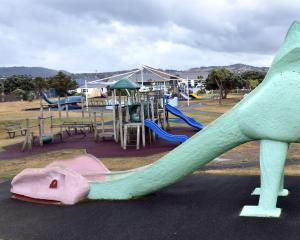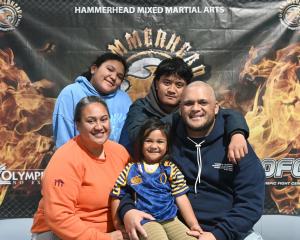
A couple of men had decided to paddle down the Taieri River from Hindon to Outram Glen and were now long overdue.
At homes around the city, LandSAR volunteers woken by their cellphones, grabbed their SAR gear while trying not to wake slumbering partners or children.
Out at the Otago Rescue Helicopter Trust base in Mosgiel, well-known helicopter pilot Graeme Gale was already reconfiguring his helicopter with search and rescue gear.
"I live nearby so I called into Outram Glen on my way there to find out from the NZ Police on the scene as much as I could about what sort of rescue it might be,'' he said.
"This helps us prepare the helicopter for any type of rescue we might have to undertake.''
Mr Gale said that only about 5% of their work was search and rescue, the rest was servicing the many demands for medical assistance the 25-year-old trust receives each year.
"It doesn't take too long to set the aircraft up for night vision work and to mount the 30million candlepower Nite Sun light on.
"By the time the others in the crew arrived, including long-time paramedic and crew chief Doug Flett, we almost had the aircraft ready to go.''
But flying at night is a totally different proposition to flying in the light of day as Mr Gale said a pilot's situational awareness was compromised at night.
"With no horizon to reference off, pilots rely on their instruments, their skills and strong local knowledge to help them fly safely.
"We were lucky with the weather that night as although it was dark with no moon and there was a haze, we still had a lot of technology to help us out, especially the night vision goggles.''
He said local knowledge helped a lot as they knew the gorge well.
"We have pulled a lot of people out of there over the years and we know where all the wires are, where the bends, narrow parts and side streams are, when to climb or stay low down near the river and where to look.''
Mr Gale said it was a very congested place having six sets of wires overhead on the run from the Outram bridge to Mt Allan.
"We often have to fly quite low, working our way safely along the river bed at willow tree-top height.
"It's not the sort of place you would want to be taking your first night-flying lesson in.''
He said the night-vision goggles offered them a good picture even on the darkest of nights.
"Our best advice to lost people is to light a match or hold up you bright cellphone screen when you hear the chopper come because we can see for kilometres with these night vision goggles.
He said the missing paddlers had made the correct choices on the night even though they underestimated the length of their journey.
"They knew to wear life jackets, when to stop paddling and start a signal fire.''
Paramedic Doug Flett said they smelled the smoke before they turned a bend and spotted the small camp fire in the distance.
"They had made it down through the Graveyard rapids and stopped before the Rock Garden set of rapids. We caught a sniff of smoke and there they were,'' he said.
Mr Gale said it was still a tricky place to be rescued from, especially at night, as the river twisted and turned with steep sides and lots of willow trees to navigate around.
Once the men were located, Mr Gale positioned the helicopter downwind so he did not blow the fire into the nearby bushes and the crew then winched them out.
"Doug [Flett] was calling the shots, telling me to move left or right - up or down, to stay safely clear of the nearby trees and rocks, it was a very tight area,'' he said.
Mr Gale said night-vision goggles had transformed how they conducted night searches and medical operations.
"Combined with the Nite Sun, GPS and terrain-avoidance software, they all help us safely conduct searches, even in rough weather.
"They take the search out of search and rescue.
"As long as we can see a light source, we can get to them.''
By John Cosgrove












